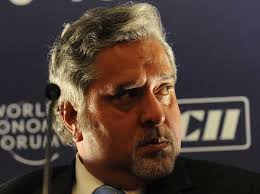 Valuation of Business under DCF Method
Valuation of Business under DCF Method
Valuation of enterprise is a complex assessment of the intrinsic value of a business enterprise, based on the strength of historic performance, present value and the future potential taking various factors in to account. Hence, the valuation of a business enterprise is both an art and a science. There are broadly three approaches to valuation, namely, Net Asset Approach, Income Approach and Market Approach.
First one is based on Net Assets of the enterprise, viz., the value of the Total Assets as per the Audited Balance Sheet less the Total Liabilities.
Second one is based on the income of the enterprise, viz., EBITDA (Earnings Before Interest, Depreciation and Amortization).
Third one is the market approach, factoring both of the above and the Discounted Cash Flow (DCF) of future earning potential of the business enterprise.
DCF method is recommended as the most appropriate method for valuation of most business enterprises, including start-ups and RBI acknowledges internationally accepted pricing methodology for valuation of shares. SEBI and other bodies also recognize the DCF method as acceptable method of valuation. An illustrative report of valuation on the basis of the DCF Method is given below for the information of the readers.
Valuation of Business of ATL Networks Limited
Background Information:
ATL Networks Limited is a leading telecom infrastructure and service provider with world class path breaking Optic Fiber Technology FTTH (Fiber-to-the-home). ATL Fiber Network offers the High speed Internet access and plethora of services. ATL Networks offers the most advanced technology of delivering the Internet at unbeatable prices.
Valuation Analysis Date:
As represented by the Management, we have taken note of the developments that have happened between Financial Years 2013-14 and 2014-15 and till May 15, 2015, which may have significant impact on the valuation of the entity. Hence, for the focus of valuation of our analysis, we have considered the valuation date to be 23 May 2015. The Management of ATL Networks Limited have provided us the Historical Financials till March 2015 and the provisional till May 15, 2015 and the Projected Consolidated Financials from 2015-16 for the next 10 years.
Valuation Analysis Methodology:
For the purpose of Valuation of business entity, we have used the guidelines as per the Accounting Standards and the latest amended pricing guidelines under the Foreign Exchange Management Act, Regulations issued by Reserve Bank of India as on May 4th 2010.
The Valuation Method suggested by these latest amended guidelines for valuation of business of an unlisted Company is Discounted Cash Flow method.
Discounted Cash Flow Method (DCF):
“The DCF method uses the Future Free Cash Flows of the Company (FFCFC) or equity holders discounted by Cost of Capital/Cost of Equity respectively to arrive at the present value. In General, the DCF method is strong and widely accepted valuation tool, as it concentrates on cash generation potential of a business.
Valuation Analysis:
As per the FEMA Regulations, we have considered the DCF method for valuation of ATL Networks Limited.
The Future Free Cash Flows to the Company, FFCFC have been calculated based on the financial projections for the period from 2015 to 2025 as provided by the Management. Based on the discussions, we understand that a heavy capital expenditure would be required in the initial years and the revenue will be dependent on the initial capacity building. The Company will break even only after 18 months.
The future growth percentage is promising based on market penetration solely in the Telecom Industry, in particular the growth in the broadband connections. Hence, the growth in the domestic market & competition in the domestic market alone is factored in the above valuation analysis.
Discounting Factor:
The Discounting Factor considered for arriving at the present value of free cash flows to the company is weighted average cost of capital. The cost of debt is post tax interest cost for debt and cost of equity is calculated based on Capital Asset Pricing Model (CAPM). We have considered domestic comparable companies to calculate the Beta utilized in the CAPM model to estimate the Cost of Equity.
Valuation of ATL Networks Limited using DCF method:
Under DCF Method, the sum of Present Value of Free Cash Flows of the entity in the explicit period is arrived at in Annexure – A. ATL Networks Limited, being an unlisted company and a company of moderate size, a liquidity discount and size of discount of 10% has been applied to derive the fair value of future earnings / cash flows.
Based on the method discussed above and subject to the assumptions and limitations stated separately in the annexure to the report and in our engagement letter, we have calculated the valuation of the business entity under the DCF Method of Valuation.
Sources of information
The valuation analysis is based on a review of the documentation provided by the Management. The sources of information include:
- Foreign Exchange Management Regulations 2000
- Audited consolidated financials for the period up to 31.03. 2015
- Provisional financial statement of the company as on 15.05.2015
- Projected financials received from the client for the 10 years from 2015-16
- Other industry related information from the World Wide Web and various publicly available sources, etc.
- Discussions with the Management of ATL Networks Limited
- Information from financial publications on Telecom industries, some of which are listed below.
http://articles.economictimes.indiatimes.com/2014-11-10/news/55955622_1_digital-india-broadband-growth-google-india
http://www.nextbigwhat.com/broadband-penetration-in-india-in-2012-297/
http://www.ibef.org/industry/telecommunications.aspx
http://www.trai.gov.in/WriteReadData/ConsultationPaper/Document/4.pdf
Caveats
Provision of valuation recommendations and considerations of issues described herein are the areas of our regular corporate advisory practice. The services do not represent accounting, audit and financial due diligence review, consulting, transfer pricing or domestic tax related services that may otherwise be provided by us as Chartered Accountants. We have relied on explanation and information provided by the management and accepted their information provided to us as accurate. Although we have reviewed such data for consistency and reasonableness, we have not independently investigated or otherwise verified the data provided. Therefore, we assume no liability for the accuracy of the data. The valuation analysis recommendation contain herein is not intended to represent the value at anytime other than the date of this report. We have no present or planned future interest in either the company or its subsidiaries if any, and the fee for this report is not contingent upon the value reported herein. Our valuation analysis should not be construed as investment advice, specifically we do not express any opinion on the suitability or other wise of entering into this consolidation of business transaction.
Distribution of report:
The valuation analysis is confidential and has been prepared exclusively for the management of ATL Networks Limited for Company Law requirements in India. It should not be used, reproduced or circulated in whole or in part, without the consent of the undersigned to any other person and any other purpose other than mentioned earlier in this report.
Sd/-
For Sundar.K. F.C.A., A.C.S.,
Chartered Accountants
 The Securities and Exchange Board of India (Sebi) may soon review its framework for listing of start-ups, including e-commerce firms, while incorporating suggestions from various stakeholders to make this platform much more vibrant.
The Securities and Exchange Board of India (Sebi) may soon review its framework for listing of start-ups, including e-commerce firms, while incorporating suggestions from various stakeholders to make this platform much more vibrant.




